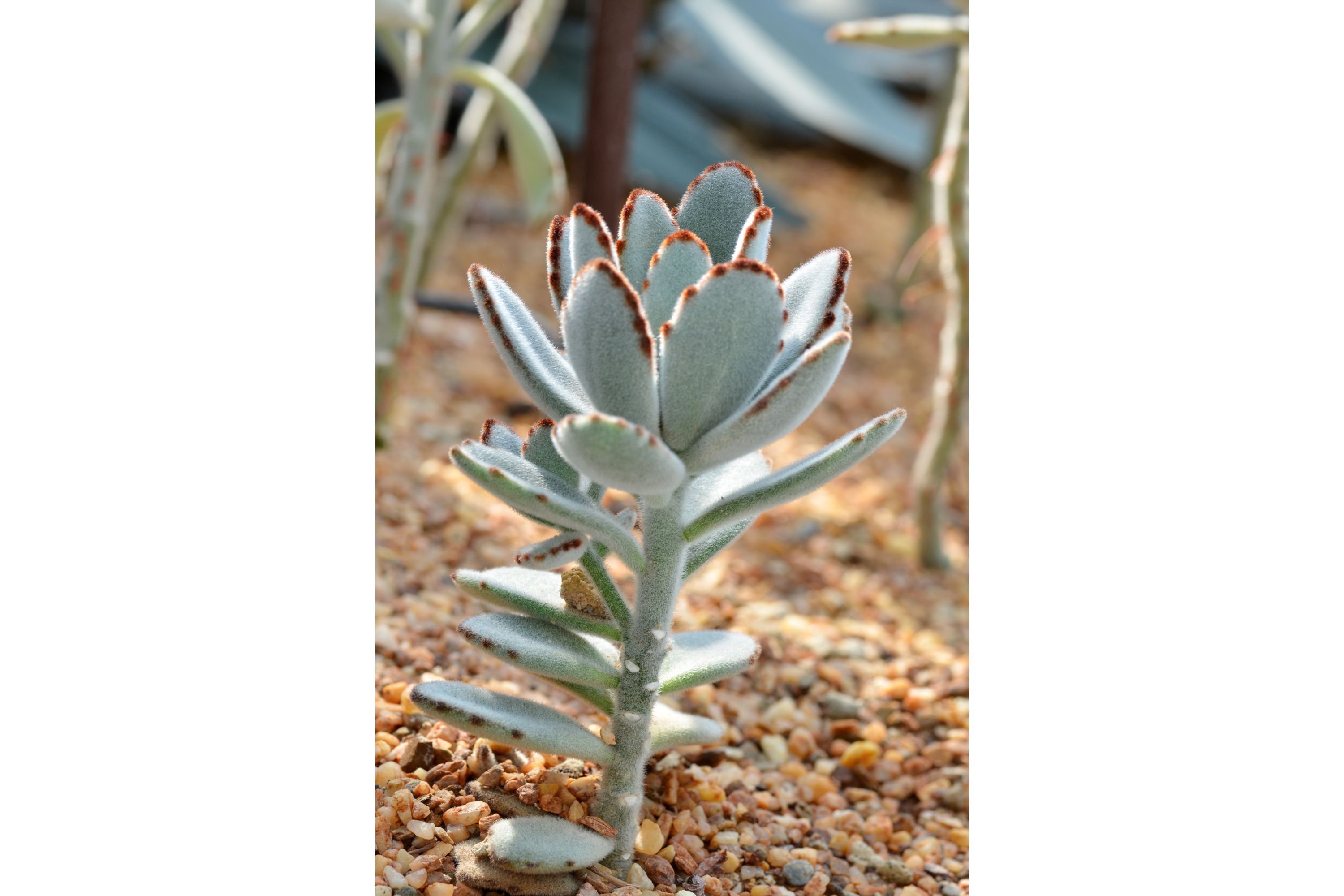Panda plant
(Kalanchoe tomentosa)

Description
Kalanchoe tomentosa, commonly known as Panda Plant or Teddy Bear Plant, is a succulent plant that belongs to the Crassulaceae family. This plant is native to Madagascar, where it grows in rocky areas and dry forests. It is a popular houseplant due to its unique appearance and low maintenance requirements. In this article, we will explore the characteristics of Kalanchoe tomentosa, its care requirements, propagation, and some interesting facts about this plant. Description: Kalanchoe tomentosa is a small, slow-growing succulent that can reach up to 30 cm in height. It has thick, fuzzy leaves that are grayish-green in color and covered with fine hairs. The leaves are arranged in a rosette pattern and can grow up to 10 cm long and 5 cm wide. The edges of the leaves are serrated, and the tips are pointed. The plant produces long stems that bear clusters of tiny, tubular flowers in shades of pink, yellow, or white. The flowers bloom in late winter or early spring and can last for several weeks. Cultivation: Kalanchoe tomentosa is a relatively easy plant to care for and can be grown both indoors and outdoors. Here are some tips on how to cultivate this plant successfully: Light: Kalanchoe tomentosa thrives in bright, indirect sunlight. It can also tolerate some direct sunlight but avoid exposing the plant to the intense afternoon sun. Temperature: This plant prefers warm temperatures between 18-24°C. It can tolerate lower temperatures, but it is best to keep the plant away from cold drafts or frost. Watering: Like most succulents, Kalanchoe tomentosa is drought-tolerant and can survive for long periods without water. Water the plant only when the soil is completely dry to the touch. Overwatering can cause the roots to rot, leading to the death of the plant. Soil: Kalanchoe tomentosa requires well-draining soil with good aeration. You can use a mix of cactus or succulent soil with perlite or sand to improve drainage. Fertilizer: This plant does not require frequent fertilization. You can feed it with a balanced liquid fertilizer once a month during the growing season (spring and summer). Propagation: Kalanchoe tomentosa can be propagated by stem or leaf cuttings. Here are the steps to follow: Stem cuttings: Choose a healthy stem and make a clean cut just below a leaf node. Allow the cutting to dry for a few days to form a callus. Plant the cutting in well-draining soil, and water it sparingly until new growth appears. Leaf cuttings: Select a healthy leaf and gently twist it off the stem. Allow the leaf to dry for a day or two until the cut end has calloused over. Place the leaf cutting in well-draining soil, cut side down, and water sparingly. After a few weeks, the cutting should start to produce roots and new growth. Interesting facts: Kalanchoe tomentosa is commonly known as Panda Plant or Teddy Bear Plant due to its fuzzy leaves that resemble the fur of these animals. The plant is sometimes called Chocolate Soldier because of its brownish-red leaves that resemble chocolate. In Madagascar, Kalanchoe tomentosa is used in traditional medicine to treat various ailments, including headaches and inflammation. This plant is also known for its air-purifying properties and can help to remove toxins from the air. Kalanchoe tomentosa is closely related to other popular houseplants such as Kalanchoe blossfeldiana
Taxonomic tree:







